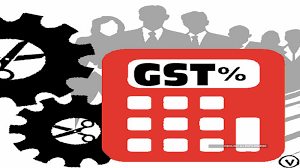[ad_1]
Union minister Nitin Gadkari stirred a debate recently by seeking the withdrawal of Goods and Services Tax (GST) on life and medical insurance premiums calling it a tax on uncertainties of life. This, along with several other demands such as tax slab rationalisation, comes when the new tax regime has completed seven years. The tax system is now clocking over Rs 2 lakh crore monthly GST collection and prospects look brighter as the economy grows, more payers are brought into the tax net and evasion is curbed.
Amid this, the GST Council is holding its next meeting on September 9, which is crucial as the Centre and states’ body has an opportunity to address some of the most pressing issues within the GST system. This meeting marks a pivotal moment for discussing necessary reforms aimed at enhancing the efficiency and fairness of the tax structure. The discussions are expected to cover a broad range of topics, including rate rationalisation, the future of the GST compensation cess, and potential expansions in the tax net.

Simplifying GST rates
A central focus of the upcoming meeting is likely to be the rationalisation of GST rates. The current system, characterised by a multiplicity of tax slabs, has introduced significant complexity and administrative burdens. The GST Council has long recognised the need for a more streamlined approach. Proposals are on the table to simplify the rate structure, such as merging the 12% and 18% slabs or adopting a three-rate framework. These changes aim to reduce complications and improve the tax system’s coherence. By establishing a clearer, more consistent rate structure, the GST system could enhance compliance and create a fairer environment for businesses.
A group of state ministers currently engaged in reviewing potential changes to the GST system has signalled a preference for maintaining the existing four-rate structure for the time being. Some members of this group argue that the GST system has now stabilised, suggesting that altering it might be premature. However, there are compelling reasons to explore simplifications.
The proposed shift to a three-rate system might include a lower rate for essentials, a moderate rate for most goods and services, and a higher rate for specific items or luxury goods. Additionally, merging the 12% and 18% slabs into a single rate, such as 16%, could reduce complexity and address inconsistencies caused by the current multiplicity of rates. Such changes would need to ensure that GST revenue adjusts to a revenue-neutral rate, given that a significant portion of tax revenue comes from the 18% slab.

Addressing the GST compensation cessAnother critical issue for discussion is the GST compensation cess. Initially introduced to shield states from revenue losses during the transition to GST, the cess was extended until March 2026 to cover shortfalls exacerbated by the COVID-19 pandemic. As this extension approaches its end, the GST Council must deliberate on the cess’s future. Options include integrating the cess into the standard GST rate or phasing it out altogether. This decision will have significant implications for revenue collection and fiscal management at both the state and central levels. The goal will be to ensure a balanced approach that supports revenue stability while addressing the financial needs of the states.
Expanding GST coverage
The Council is also expected to explore the inclusion of previously excluded sectors such as electricity, natural gas, and petroleum products within the GST framework. Incorporating these sectors into the GST system would facilitate a more comprehensive tax approach and allow businesses to benefit from input tax credits. This expansion could simplify the tax system and promote a more integrated approach to taxation. However, the process of including these sectors will require careful consideration to balance revenue needs with the impact on various stakeholders.
Simplifying compliance for businesses
An essential aspect of the GST reform agenda is simplifying compliance requirements, particularly for smaller enterprises. The current system’s complexity can be burdensome for smaller businesses, leading to increased administrative costs and potential compliance issues. Streamlining compliance procedures and reducing administrative hurdles could significantly ease the burden on businesses. This is especially important as the GST system continues to evolve and adapt to changing economic conditions.
Revisiting GST on insurance
The GST Council should also consider adjustments to GST rates on term and health insurance policies. Targeted relief for these essential services could make them more affordable for consumers, particularly if it is focused on specific types of policies like pre-packaged term life and medical insurance. Ensuring that this relief is properly managed will be crucial to prevent potential misuse and ensure that benefits are directed to those who need them most.
As the GST Council prepares to tackle these critical issues, the focus will be on refining the GST system to better serve both businesses and taxpayers. Simplifying the rate structure, addressing the future of the compensation cess, expanding coverage, and easing compliance requirements will contribute to a more efficient and equitable tax regime. The outcomes of this meeting will set the stage for future reforms, ensuring that the GST system continues to evolve in response to the needs of the economy and the broader public.
As it is, seven years is a long time for any new system to stabilise and the GST is now ripe for the next generation of reforms.
(Editor’s note is a column written by Amol Dethe, Editor, ET CFO. Click here to read more of his articles exploring several buzzing topics)
[ad_2]



